 REMEMBRANCE SUNDAY SERVICE
REMEMBRANCE SUNDAY SERVICE
The Remembrance Service this year,2014, at St Firmin’s Church was for us something special, not only was it the 100 year anniversary of the start of WW1 but it was a service where we came to know more about those men in the village whose loss we remember.
Last November Janet (our Vicar) decided she would like to find out more about the men of the village lost in WW1 and WW2, for the men to be more than a list of names at this years service.
Since January a small group of us have been researching the men named on our memorial and it has been both interesting and very moving to discover more about them, their lives and the village at that time. Our Remembrance Service was interspersed with short biographies of some of the men and and our Roll of Honour was presented as a short film presentation.
It was an extremely full service with over three hundred attending, we feel that to all, the fallen men of Thurlby are now real people, who lived in the village with their families, who grew up in the village, attended school,church and chapel here and whose terrible loss effected many.
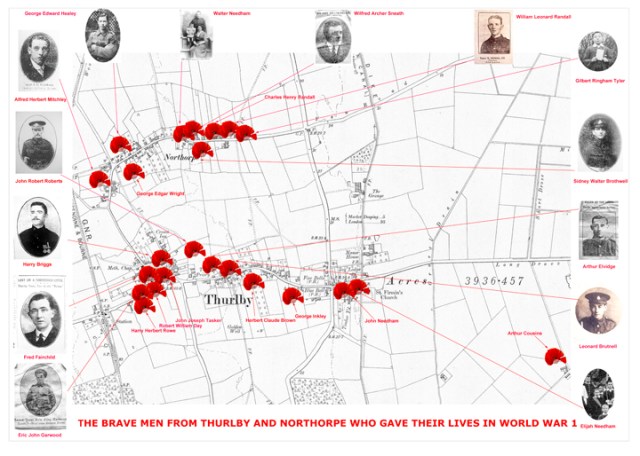 For several months a small group in the village have been researching the “men behind the names” on our WW1 Memorial. Below is a brief account of our researches so far.
For several months a small group in the village have been researching the “men behind the names” on our WW1 Memorial. Below is a brief account of our researches so far.
We are always very grateful for any further information and photographs, and corrections that you can give us to further our stories of these brave men, eventually all this information will be published in a book. We would also like to put together a full list of men from Thurlby and Northorpe who went to the Great War (see Memorial Roll tab) and returned safely.
We have a Memorial Roll but know there are gaps- can you help?
HARRY BRIGGS 1881—1915
 Harry Briggs was born in 1881 to Henry Simpson Briggs and Sarah, Harry had four sisters Jane, Lilian, Florence and Annie.
Harry Briggs was born in 1881 to Henry Simpson Briggs and Sarah, Harry had four sisters Jane, Lilian, Florence and Annie.
In 1880 they were living in Gainsborough and in 1891 in St George Hanover Square, London.
Harry enlisted on the 14th March 1898 at Warley in Essex aged 18 and served with the Essex Regiment in the Boer War, in South Africa and India. On returning to England he transferred to the 2nd Battalion of the Lincolnshire Regiment.
He entered the fray in November 1914 fought in France and Flanders, he was killed in action 9th May 1915. He was reported to be the first casualty of the war from Thurlby. Harry is remembered on the Ploegsteert Memorial Belgium.
LEONARD BRUTNELL 1897 –1917
Leonard Brutnell was born in Thurlby in January 1st 898 and was baptised at the Methodist High Street Chapel in 1900, he was the son of John Richard and Mary Jane Brutnell (formerly Sandall), he had three sisters and two brothers.
In 1901 Leonard was living in the High Street and in 1911 he was at the home of his Maternal Grandmother and Great Aunt in Thurlby.
Leonard enlisted at Bourne, Service No:32264, his regiment was the 11th Reserve Cavalry and was transferred to the 9th Battalion. At the time of death he was in the 9th (Service) Battalion. Alexandra, Princess of Wales’s Own. (Yorkshire Regiment)
He fought in France and Flanders and died of his wounds on the 7th February 1917, aged 19. He is buried at the Lijssenthoek Military Cemetery, Poperinge, Belgium.
SIDNEY WALTON BROTHWELL 1894 –1815
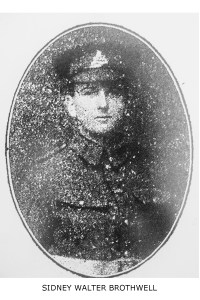 Sidney Walton Brothwell was born on the 12th August 1894 at Lound, Toft to Walton and Emily Brothwell, he had a brother Wilfred and three sisters Olive, Edith Emily and Lucy.
Sidney Walton Brothwell was born on the 12th August 1894 at Lound, Toft to Walton and Emily Brothwell, he had a brother Wilfred and three sisters Olive, Edith Emily and Lucy.
In 1902 the family lived at the bottom of Northorpe, by 1911 Sidney was boarding in Uffington and was a 2nd Waggoner on a farm, when enlisting he was an agricultural labourer (horseman)
Sidney enlisted on the 2nd September 1914 ages 20, in the 8th Battalion of the Lincolnshire Regiment. He fought in France and Flanders.
Wilfred was killed in action on the 26th September 1915 and is remembered on the Loos Memorial, Calais in France.
HERBERT CLAUDE BROWN 1888-1919
Herbert was born in Thurlby and baptised at the Methodist Top Chapel in that year. He was the son of William Brown, a Blacksmith and Alice and had one brother.
In 1891 the family were living off the High Street in Golden Well Lane. In 1911 he was living with an Uncle in Nottingham. His employment was as a Drapers and Tailors Traveller.
Herbert married in 1913 to Mary Agnes Cheshire from Nottingham and they had a son Herbert Claud in September 1913.
Herbert enlisted in Northampton in December 1915 and served with the 4th/1st Siege Bde. Royal Garrison Artillery.
Lance Bombardier H C Brown died on the 18th October 1919, of a perforated gastric ulcer and peritonitis.
He is buried in Nottingham General Cemetery where he is remembered on the war memorial
ARTHUR COUSINS 1893-1918
Arthur was born in Witham on the Hill on 4th July 1893, he was the third son and fourth child of Samuel and Susan nee Pick. His family had lived in Witham for generations before moving to Thurlby fen in early 20th century when his father was a farm foreman.
In 1901 Arthur was seven and living at Holme Bottom Farm, Witham, where his father was a shepherd. By 1911 seventeen year old Arthur was a horseman on the farm down Thurlby fen. During his time at Thurlby he attended the League for Boys against Smoking and Gambling. When he enlisted at Bourne on 21st February 1916 his occupation was steam Presser.
Arthur was posted to 9th battalion Machine Gun Corps and would have trained at Belton House, he saw action in the battle of the Somme, the Ancre and the Scarpe which was part of the Arras offensive. After the battle of Polygon Wood his final battle was the battle of the Selle.
After more than two years of service he died of wounds on 26 October 1918, so near to the end of the conflict. He is remembered at Moorseele Military Cemetery, Wevelgem West Flanders and also on his parents headstone in St Firmin’s churchyard.
ROBERT WILLIAM DAY 1884-1918
Robert was born on 15th November 1884 in Bainton, his parents were Robert William and Elizabeth, nee Holliday, and they had married in 1882.
They lived in several locations, but in 1901 16 year old Robert was working as a warehouse porter and living with his parents at 54 Grant road Battersea.
We do not know where Robert was in 1911,when his parents were at Thurlby fen, his mother being a Thurlby native. As he re-enlisted in London in 1914. He was an Army Reservist. He had previously been in the Royal Horse Artillery/Royal Field Artillery. There are references To R W Day being in both the 12th Brigade and the 149th Brigade. At the time of death he was in the 149th Brigade.
He was awarded the 1914 Star (Mons Star) for service between August 5th and November 22nd 1914 – with Clasp (awarded for those under fire between August 5th and Novenber 22nd 1914.He saw action throughout the war but was killed on 11th May 1918 and is buried at Boulogne Eastern Cemetery where his grave shows the inscription ”Not dead but gone before”and also “Ubique quo fas et Gloria ducunt” the motto of the Royal Artillery. He was awarded the Victory and British medals and also in recognition of his early enlistment-the 1914 medal –“the Mons Star”
ARTHUR ELVIDGE 1894-1917
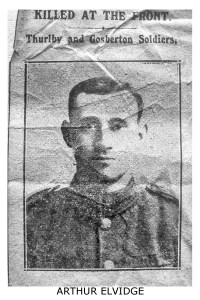 William Edis Arthur Elvidge was born at Thurlby on 30th January 1894, his parents were William Edis and Eliza Ann nee Robinson who were married in 1893.
William Edis Arthur Elvidge was born at Thurlby on 30th January 1894, his parents were William Edis and Eliza Ann nee Robinson who were married in 1893.
Arthur was the first child of the family who lived at The Priory High Street, where his father was a farmer and grazer and Arthur worked on the farm. He had two younger brothers and one sister.
Arthur enlisted at Lincoln 5th June 1916 . Appointed to 3/4 Lincolnshire Regiment. Joined the Machine Gun Corps Infantry, he would have done his training at Belton House.
Arthur saw action throughout the war and took part in the 3rdbattle of Ypres and it was at the Battle of Poelkapelle where he was killed on 26th October 1917.
He is remembered at Langemark Poelkapelle West Flanders.
His family moved away from the village to Laindon in Essex in 1916 but his death was recorded in the Grantham Journal on 10th November 1917.
Additional research by Joyce Stevenson
ST FIRMIN’S CHURCH THURLBY WESLEYAN METHODIST CHAPEL & THE FREE METHODIST ‘TOP’ CHAPEL MEMORIALS
Service No: 44121
Rank: Private
Regiment/Service: Machine Gun Corps (Infantry) 173rd Company
Grave/Memorial Ref: VI E 6 Cement House Cemetery The Ypres Salient Belgium
FRED FAIRCHILD 1892–1915
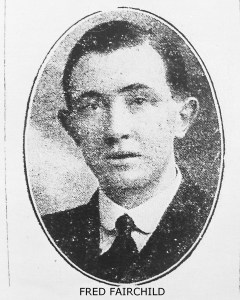 Fred was born on the 27th July 1892 in Thurlby. His parents were Joseph, a publican ’and dray maker’ in 1891 at the Blue Bell Inn situated on Thurlby crossroads, and Sarah Ann Fairchild. Fred was a ‘highly respected parishioner…a Sunday school scholar and a valuable member of the church choir’ (Rev J S Pettifor, vicar of Thurlby).
Fred was born on the 27th July 1892 in Thurlby. His parents were Joseph, a publican ’and dray maker’ in 1891 at the Blue Bell Inn situated on Thurlby crossroads, and Sarah Ann Fairchild. Fred was a ‘highly respected parishioner…a Sunday school scholar and a valuable member of the church choir’ (Rev J S Pettifor, vicar of Thurlby).
By 1901 Joseph was a farmer (Ivy House) and in 1911 Fred was a milkman on the farm, whilst one of his older brothers Harry was a horseman.
Fred began working for the P & O Group in October 1913 as a general servant and baggage steward on the SS Mantua before transferring to the SS Persia in August 1914: his home address is listed as Walthamstow. As a baggage steward Fred was very busy on embarkation days but when at sea passengers could request to have luggage brought up so that they could replace clothes previously worn; he would also be expected to turn his hand to whatever was required when baggage assistance was not needed.
The Persia was the company’s largest and most expensive P & O luxury liner to date travelling the ‘Empire Run’ between London and Bombay some 70 times. It’s final journey started from London on the 18th December 1915. With some illustrious passengers, a large shipment of mail and an alleged consignment of gold bullion the ship was struck by a torpedo without warning on the afternoon of the 30th December 1915 some 70 miles south of Crete. 334 of the 501 persons on board were lost, including Fred. He is remembered on his parents’ gravestone in Thurlby cemetery.
ERIC JOHN GARWOOD 1891-1916
 Eric was born in Thurlby on 10th January 1891 and baptised in the Top Chapel. He attended Thurlby school and the Technical Institute in Grantham. His parents, William Edis and Annie Wade Garwood were farmers on Station Road. William was also a local preacher highly regarded for his preaching skills and a member of the Temperance Movement. Eric had two sisters. He grew to be well respected in the community—a keen sportsman, a Good Templar and member of the Wesleyan church.
Eric was born in Thurlby on 10th January 1891 and baptised in the Top Chapel. He attended Thurlby school and the Technical Institute in Grantham. His parents, William Edis and Annie Wade Garwood were farmers on Station Road. William was also a local preacher highly regarded for his preaching skills and a member of the Temperance Movement. Eric had two sisters. He grew to be well respected in the community—a keen sportsman, a Good Templar and member of the Wesleyan church.
Tragically both of Eric’s parents died just before the outbreak of war: his father committed suicide as a result of depression in 1913 and his mother died almost exactly one year later. Eric took over his father’s farm in 1913 but passed it to his uncle in 1915 when he decided to enlist in the Lincolnshire Regiment, 6th Battalion which came under command of 33rd Brigade in llth (N) Division. Eric had been a member of the Volunteer Training Corps and was described as ‘a crack shot and an expert ‘bayonetter’.
The Division was ordered to embark from Liverpool for service in Gallipoli from 30th June 1915 sailing on the Aquitania and Empress of Britain.
After only 10 days in action he contracted enteric fever (typhoid fever), was shipped first to hospital in Malta and after 6 months returned to Liverpool where he died. His body was returned to Thurlby where he was buried.
GEORGE EDWARD HEALEY 1896–1916
George Edward Healey was born in Corby, Lincolnshire on 23rd July 1896.
He was only 20 when he was killed in action.
He enlisted in Lincoln on the 17th May 1915, aged 19.
He had his medical on the 25th May 1915
Height – 5ft 7inches tall. 36” Girth. Range of expansion 2 “
He was approved by the 4 Lincolns.
He was now Private Healey, Regimental no. 4063
When he left the shores of England, duty bound for France, he was in the Lincolnshire Regiment.
On the 20th September 1916 he was transferred to the Kings Own (Royal Lancaster Regiment) 1st Battalion. Service no. 27253
It was believed that George was killed by a sniper on the 20th Dec 1916
GEORGE INKLEY 1885-1917
 George was born 12th March 1885 in Thurlby, the eldest son of George and Susannah (Wade). In 1901 the family comprised of George, John Nicholas, Arthur Wade, Elizabeth May and Olive Myra. They lived at Inkleys place on the High Street, Thurlby, Lincolnshire.
George was born 12th March 1885 in Thurlby, the eldest son of George and Susannah (Wade). In 1901 the family comprised of George, John Nicholas, Arthur Wade, Elizabeth May and Olive Myra. They lived at Inkleys place on the High Street, Thurlby, Lincolnshire.
George Senior was a property owner and a farmer in Northorpe.
Back row left to right – Nicholas, Olive, Arthur Wade, Elizabeth May, George. Front row: George (father) Susannah (mother) nee Wade(George- back row – right)
At the age of 16 George Junior was a Grocers Apprentice and later on, shortly before enlisting, he was in the employ of Messrs J. E. Noble and Sons, Boring Contractors, Thurlby.
George joined up in 1915 in Bourne Lincs. He was in the Lincolnshire Regiment 5th Battalion
George was killed in action on 30 April 1917 and buried at Maroc British Cemetery, Grenay, Pas de Calais, France. RIP
Thank you to Clive Baker who got in touch with the following information and memories, it is lovely to bring village families to life.
“My daughter and I are the only living descendants of the Inkley family who lived in the cottage, now known as “Inkley’s Place” at Thurlby.
My grandfather was Arthur Wade Inkley, the youngest son. He moved to Burton upon Trent some time before WW1, having first worked at the Grange, between the village and Bourne.
He married Dorothy Hunt, fathering two daughters, Molly Noreen, my mother, and Margaret May, only two of the five Inkley children married, the other being Nicholas, and he was the only one to have children. Called-up for service late in the war, he survived by nothing less than a miracle; shot in the abdomen, he lay on the ground and avoided further attack by pretending to be dead. He lay there for two to three days with only a packet of Woodbines for comfort until rescued by soldiers looking for the guns of dead soldiers. He was lucky that a surgeon was at hand with the necessary skills and made an excellent recovery. His was employed in Burton until retirement as a grocer’s assistant at Wilkinson County Stores. He passed away in January 1966 having suffered a stroke and was cremated at Derby.
I remember him with great affection, being gentle mannered, nothing seemed to stir him, and that is probably how he survived the horrors of Flanders.
Elizabeth May Inkley, the youngest daughter became a school teacher, first at Thurlby but, for the remainder of her career, at Fulbech where she lodged during the week. She eventually sold the family home at Thurlby in 1965 and spent the rest of her life at Fulbech where she died in 1983; her resting place is in Fulbech church yard.
I’ll never forget her funeral, expecting to be one of just a handful of mourners, I was shocked to find the church packed, mainly ex pupils paying their respects.
George Inkley, the eldest son is well documented on your website, Nicholas Inkley survived WW1 returning to the building trade and marrying Eva. Olive Inkley, a surviving twin, who I do remember began work in service and died some time in the fifties.
I returned to Thurlby in 2009, having not visited since 1965, and immediately found the cottage, being quite touched that it bore the name of the old family who I think moved to it in 1866 when George Inkley married Susannah Wade, daughter of John Wade a timber merchant in Bourne.”
ALFRED HERBERT MITCHLEY 1894–1916
 Alfred was born on 15 April 1894 to Ernest, a master tailor and Miriam (Lebbon) in Felixstowe. Alfred spent his early years in Felixstowe but moved with his family to Huntingdon between 1901 and 1911. There he got a job as a Grocer’s assistant, and later moved to the Bourne area, working for Wherry’s in the retail Grocery business.
Alfred was born on 15 April 1894 to Ernest, a master tailor and Miriam (Lebbon) in Felixstowe. Alfred spent his early years in Felixstowe but moved with his family to Huntingdon between 1901 and 1911. There he got a job as a Grocer’s assistant, and later moved to the Bourne area, working for Wherry’s in the retail Grocery business.
He enlisted in Bourne on 3rd April 1915 for’Short Service’. His enlistment papers show he was 5ft ll’Ains and weighed list 2lb. He joined 10th (Service) Battalion of the Lincolnshire Regiment, known as the Grimsby Chums, and was sent to Brocklesby camp near Grimsby for training. Whilst stationed at Brocklesby, Alfred married Lizzie Aquila Peasgood at the United Chapel in thurlby. They were both 21 at the time.
Alfred was quickly promoted to Lance Corporal on 3rd February 1916 and Corporal on 3 March 1916. We know the 10th Lincolnshire was sent to Flanders and France and were involved in the Battle of the Somme. They were involved in the Battle at La Boiselle, where ‘no Man’s Land’ was particularly wide. The morning of 1st July 1916, the day Alfred Died in action, started with a huge explosion forming a massive crater, but failed to sufficiently weaken the German defences. The 10th Lincolnshire was virtually wiped out that day.
ELIJAH NEEDHAM 1897 – 1918
 Elijah Needham was born on Tuesday 23 November 1897 the son of Sandall Needham and his wife Sarah (former Burgess).
Elijah Needham was born on Tuesday 23 November 1897 the son of Sandall Needham and his wife Sarah (former Burgess).
Elijah was their second son, a little brother for Elizabeth, and John who also perished in the Great War. Elijah’s mother registered his birth on the 16th December 1897 and called her new son after her own father Elijah Burgess.
Elijah began his life living at The Green, Thurlby, but before 1911 the family had moved to Church Street, Thurlby, and aged 13 Elijah had left school and was working as a labourer on a farm.
We know he was a member of the “Excelsior Band of Hope” and in 1904 he and his friend Sidney Rogers gave a recital which gave “much cheer” to all attending.
Like his brother John, Elijah joined the Lincolnshire Regiment, and became a member of 2nd Battalion.
Elijah was killed in action during the battle of Aisne on Wednesday the 29th May 1918 and is remembered with honour at the Soissons Memorial, a soldier with “no known grave”.
JOHN NEEDHAM 1896 – 1917
John was born in Thurlby on Sunday 19th April 1896 the son of Sandall Needham and his wife Sarah (formerly Burgess).
Known as Jack to family and friends at 4 years old Jack and the Needham family lived at The Green, Thurlby. Jack was Sandall and Sarah’s first son with an elder sister Elizabeth. He was to have 4 “little” brothers and one more little sister. Dad, Sandall, was a “teamster” on a farm on Census night 1901.
At age 15 Jack is a “labourer on a farm” with his 13 year old brother Elijah, and father Sandall is now a Horseman at the “wood yard”. They have now moved to Church Street, Thurlby to a house described as having 3 rooms. All 7 children, Sandall and Sarah are living in this property, perhaps situated just behind the Horseshoe public house.
John joined the Lincolnshire Regiment, enlisting at Bourne, and became part of the 1st/4th Battalion Territorial Force. His family received a letter from his Captain dated 3 August 1917 saying John had been killed, “shot by a sniper”.
John is remembered with honour at the Philosophe British Cemetery.
WALTER NEEDHAM 1889–1917
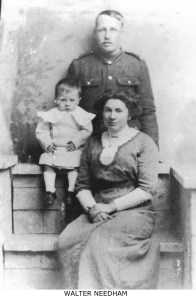 Walter Needham was born on Wednesday 23 January 1889 the second son of John William Needham and his wife Eliza (formerly Kemp). Walter’s father registered his new son’s birth on the 2nd March 1889 and describes himself as a “farm labourer”.
Walter Needham was born on Wednesday 23 January 1889 the second son of John William Needham and his wife Eliza (formerly Kemp). Walter’s father registered his new son’s birth on the 2nd March 1889 and describes himself as a “farm labourer”.
In 1901 12 year old Walter and his siblings are living at “bottom Northorpe” and father John is a Woodman. Walter would have gone to the local village school along with his elder brother and sister, and younger siblings. His mother died when he was 15.
In 1911 we find 22 year old Walter living with a family at Moulton Marsh and working as a “waggoner on farm”. Walter married Elizabeth E Rowlett at the Abbey Church, Bourne in 1913 and they made their home at Waterside, in Willoughby Road, Bourne. Two children were born to Walter and Elizabeth.
Walter enlisted with the South Staffordshire Regiment and fought with the 1st Battalion. Walter died of his wounds on Friday 20 April 1917 and is buried and remembered with honour at the Ervillers Military Cemetery in France.
CHARLES HENRY RANDAL (HARRY) 1890–1918
Charles Henry Randall was born in Sheffield on 21st July 1890. He was the first son of Charles and Lydia Mary (Knipe) Randall.In 1901 they moved to 12 Northorpe. Charles Randall owned his own Carpenters Shop which was on the site of 12 & 14 Northorpe. By 1905, Charles and Lydia had two sons and four daughters. Charles helped his father alongside his younger brother William Leonard.
Charles, at the age of 25, signed up on 21 February 1916 in Bourne, Lincolnshire. Service No: 64200. In France he was in the Cheshire Regiment 16th Battalion.; and at the time that he was reported missing he was attached to the Queen’s Own (Royal West Kent Regiment), 7th Battallion.
Charles was killed in action on 4 April 1918 aged 27, “death accepted for official purposes, dated assumed on or since 04/04/1918 France”
He was laid to rest a Pozieres Memorial, France and is remembered on Panel 35-36..
WILLIAM LENORD RANDALL 1895 – 1917
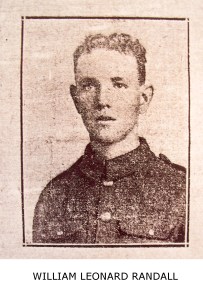 William was born in Freiston in 1895. In 1901 the family were living in Northorpe at No.12 William’s parents, Charles Randall and Lydia Mary (Knipe) had a carpenters shop on the site of 12 & 14 Northorpe. William worked with his father alongside his brother Charles in the Carpenters shop.
William was born in Freiston in 1895. In 1901 the family were living in Northorpe at No.12 William’s parents, Charles Randall and Lydia Mary (Knipe) had a carpenters shop on the site of 12 & 14 Northorpe. William worked with his father alongside his brother Charles in the Carpenters shop.
Records have not been found to confirm when William joined up but he did join the Royal Engineers 69th Field Coy as a Sapper.
Sadly he was killed in action on 28 September 1917 aged 22. He is laid to rest in Monchy, British Cemetry. Monchy-Le-Preux.
JOHN ROBERT ROBERTS 1889-1915
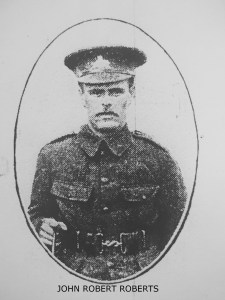 John was born on 11 August 1889 to William Roberts and Lillian, formerly Walpole, in Belmesthorpe, Rutland. His mother was soon widowed and he spent his early life living with maternal grandparents, mother and younger brother Alfred. The 1911 Census shows that he was living in Thurlby, where his mother was housekeeper to Henry Rudkin. John was working as a farm labourer. His mother later married Henry Rudkin and they lived in Crown Lane.
John was born on 11 August 1889 to William Roberts and Lillian, formerly Walpole, in Belmesthorpe, Rutland. His mother was soon widowed and he spent his early life living with maternal grandparents, mother and younger brother Alfred. The 1911 Census shows that he was living in Thurlby, where his mother was housekeeper to Henry Rudkin. John was working as a farm labourer. His mother later married Henry Rudkin and they lived in Crown Lane.
John joined the Sherwood Foresters, Notts and Derbyshire Regiment in the 1st Garrison Battalion. This was formed in Lichfield in July 1915, his first theatre of war was the Balkans. Garrison Battalions were generally raised from men who were too old/young/unfit for full service. They literally ‘garrisoned’ areas, leaving regular battalions free to fight.
John died on 26th November 1915 and is buried in Hill 10 Cemetery, Suvla on the Gallipoli peninsula.
Additional information researched by Joyce Stevenson
ST FIRMIN’S CHURCH, THURLBY WESLEYAN METHODIST CHAPEL & THE FREE METHODIST ‘TOP’ CHAPEL MEMORIALS
Service No: 29258
Regiment/Service: Sherwood Foresters (Notts & Derby Rgt.) 1st (Garrison) Battalion.
Grave/Memorial Ref: 1.A.14 Cemetery: Hill 10 Cemetery, Gallipoli.
THURLBY SOLDIER KILLED
Pte. J. Roberts, of the Notts, and Derby Regiment, of Thurlby, who was accidentally killed recently at Suvla, in his trench by the falling of the roof which was covered with earth. Eight other soldiers were reported killed at the same time, and twelve other men injured. Pte.Roberts was well known in the village, and had only been in the regions of Suvla about three weeks.
Lincolnshire Free Press.
THURLBY
ACCIDENTALLY KILLED AT THE DARDANELLES.
Mrs.Rudkin of Crown Lane, has received official intimation that her son Pte.J. Roberts, was accidentally killed whilst with the Mediterranean Force. Deceased had been in the service of Mr. J. E. Noble, boring contractor. Sad to relate, he had only been in the region of the accident three weeks, and upon his dead body was found a letter written to his mother, stating “that he was well up to the present, and that he hoped it would not be long before he could see them again.” Much sympathy has been expressed with the relatives. A sympathetic letter has been received from deceased’s Captain, who states that priv. Roberts was killed in his trench on Nov. 26th by the falling in of the roof. There were eight others killed at the same time and 12 injured.-They were all buried at West Beach Cemetery and a cross erected to each man. The melancholy accident cast a gloom over all their comrades.
Stamford Mercury.
HARRY HERBERT ROWE 1888-1917
Harry was born on 14th August 1888 to Henry Rowe, a Cottager and Emily Rowe, formerly Kemp. The family lived in Station Road Thurlby until at least 1911. At this time the census shows he was a Waggoner on a farm. He had two younger siblings, William H R and Mabel.
He was a well known figure in the neighbourhood and was a good worker at the Wesleyan Chapel, Thurlby in the Sunday School and Wesley Guild. He also acted as poor steward, an office which had been held by members of his family for over twenty years.
Harry may have been reluctant to enlist, as he applied for exemption. The Grantham Journal reported on Sat 18 November 1916 that he was refused exemption. He was described as a horseman, and was apparently living in Northorpe.
He joined the 2nd/5th Battalion, Duke of Wellington’s (West Riding Regiment). We know he fought in France and Flanders, most likely at the Battle of Bullecourt, part of the flanking operations around Arras. The Grantham Journal reported that it was initially believed he may have been taken prisoner, but it was later declared that he had been killed in action on 3rd May 1917.
He is remembered on the Arras Memorial and on his parents’ headstone in
St Firmin’s Churchyard
WILFRID ARCHER SNEATH 1888–1917
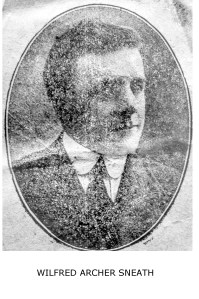 Wilfrid Archer Sneath was born 15th March 1888 at Bowthorpe Park Manthorpe to Henry Andrews Sneath and Elizabeth (formerly Garwood). He was the middle son of three boys. He spent his childhood in Northorpe , enjoying adventures in the village and countryside with his brother Alec and his best friend Hettie Holmes, who recorded this happy time.
Wilfrid Archer Sneath was born 15th March 1888 at Bowthorpe Park Manthorpe to Henry Andrews Sneath and Elizabeth (formerly Garwood). He was the middle son of three boys. He spent his childhood in Northorpe , enjoying adventures in the village and countryside with his brother Alec and his best friend Hettie Holmes, who recorded this happy time.
Both Wilfrid and his brother were extremely clever and his many acheivements were regularly reported by the Grantham Journal, both boys were at Manchester University. Wilfrid went on to Manchester University in 1906 to train as a Doctor, he graduated with a First Class Honours Degree . In his short life he had a very distinguished career with many scholarships and awards. He became Dr Wifrid Archer Sneath MB, ChB, LRCP, MRCS, FRCS Eng. This by the age of 25.
Wilfrid enlisted in the Royal Army Medical Corp, where he gained the Military Cross for “conspicuous gallantry and devotion to duty during operation”
He died of wounds in 1917 in Belgium when a shell burst, wounding him seriously, as he returned from a tour of inspection. He is buried in the Coxde Military Cemetary, West Flanders, Belgium
This is further information from research carried out for Wilfred Sneath – the Sneath family were very active in Thurlby
Wilfrid Sneath was born on the 11th February 1888 at Bowthorpe Park, Manthorpe. There is no baptism found for him in either of the Methodists Chapels or at St Firmin’s Church, although in the years previous to his birth there had been many Sneaths baptised at the Methodist High Street Chapel.
Wilfrid’s father was Henry Andrew Sneath a Corn Merchant and his mother was Elizabeth Mary (given as Mary on the 1901 census) Garwood, both natives of Thurlby.
In 1891 the family which included an older brother Harry and a younger brother Alec Andrews were living in Northorpe Street, in 1901 this is said to be bottom of Northorpe, this in a house later known as Double Yew Nurseries.
Extract from Thurlby an Ordinary Village with reference to the Sneaths
“As long ago as the 1890s there was a cricket pitch at Northorpe, the wicket being laid down by the Sneath family “in a paddock behind their farmhouse (now Double Yew Nurseries). It remained in excellent condition into this century although unused for quite a few years during and after World War 1. The outfield was an undulating meadow, still being grazed, and the effect on cricketers’ white apparel can well be imagined.” MK AEN says of it “The field had once been ploughed in the traditional way, so that it wasn’t as flat as the Oval, but the pitch followed the ridges and grooves and was ideal for a party consisting of little more than bowlers and batsmen, endlessly practising. The star player was Frank Riley, who lived nearby and who mustered a quorum whenever possible. Later, numbers and standards improved enough to justify occasional matches with visiting teams.” This would have been in the 1920s. The old stone roller “the Sneath boys used to keep the wicket in condition still exists.”
A childhood friend Hettie Holmes, who lived opposite, wrote fondly in her memoirs of the great fun that was had as children with her best friends Wilfrid and Alec Sneath (an extract of these memoirs is included in this folder).
Both Wilfrid and his brother Alec were very clever boys, his brother Harry remembers of Wilfrid
“He was a marvellous fella. Oh, he read a book, he could repeat it almost from beginning to end. Had a marvellous memory. And, he never did any revision, and he passed everything he sat with Honours. Wonderful fella, he was.”
The education of both is well documented in reports by the Grantham Journal
In 1900 at the age of 12 years Wilfred won a Kesteven Junior Scholarship to Grantham Technical College.
In 1905 it was reported that
” The Kings Scholarship examinations the Best Student in the Fourth year was Wilfred Sneath and in Best Student in the third year Alec Sneath”
1908 it was reported
“Major Scholarship – For the second time in its history the County Scholarship has come to Thurlby, and to a member of the Sneath family, in the person of Mr Alec Andrew Sneath. This perhaps constitutes a record, as both he and his brother Wilfred have previously won Minor Intermediate and Major in turn. He studied at the Technical Institute for five years, and this last year Victoria University, Manchester. He has also satisfied the examiners at the Inter-Arts exam, coming out with a second class honours”
In 1910 Wilfred, now at Manchester University was awarded the Turner Medical Scholarship, value £35, which entitled him to a year’s graduate course in the Medical School. Later in 1910 he gained the Agnew Medical Scholarship, value £20, the second scholarship gained in a month.
Wilfrid graduated with a First Class Honours Degree from Manchester University as a Batchelor of Medicine (MB) and Batchelor of Surgery (ChB) and following his success was appointed Demonstrator in Anatomy at Manchester University. The success continued in 1911 when he was awarded an award of £25 for research work in Medical Science.
In 1912 Dr Wilfrid Sneath received his Licentiate of the Royal College of Surgeons (LRCP) and Membership of the Royal College of Surgeons (MRCS)
In 1912 Wilfrid’s brother Harry got married to Phyllis Brown and Wilfrid acted as best man, also in attendance was his brother Alec, now the Rev. Alec Sneath, who had just returned from Cape Coast Castle, West Africa where he was the Principle of the Wesleyan Training College.
In June 1913 his mother passed away, she is buried in Thurlby Churchyard.
It was reported in August 1913 that Wilfrid had returned home from Manchester and had been admitted to Stamford Infirmary, it doesn’t say what his illness was.
Further success came in December 1913 when passed his examination and became a Fellow of the Royal College of Surgeons, the climax to a very successful career – still only aged 25.
After filling the post of house-surgeon at Manchester Royal Infirmary and at the Seaman’s Hospital, Greenwich he went into private practice with Dr Cheetham of Ashton under Lyme.
Wilfrid enlisted in the Royal Medical Army Corp in 1914 at the beginning of the war taking a temporary commission as a lieutenant. In November it was reported that he
” has been at a hospital at Calais for the last two weeks has left for the front”
21st November 1914 Grantham Journal posted extracts from a letter home
Extract from a letter from Dr Wilfred Archer Sneath- Reported in the Grantham Journal Saturday 21 November 1914.
It was reported on the 14th November 1914 that Dr Sneath who had been at the hospital in Calais for the last two weeks and has now left for the front
Dr Sneath in France- In an interesting letter from Dr Wilfrid Sneath (son of Mr H A Sneath of Thurlby) under date of November 1st from hospital Sophie Barthelot, Rue de Gambetta, Calais, he says:
“We have now settled down very well and have got about 120 beds opened. Later we hope to have 200. We are working very hard, and doing with very little sleep. Last night I did three operations. At present we have only one operating theatre, but we have equipment for two, and shall have another when we get a room suitable. It is rather heart breaking work here as we get the very worst cases, and many die within a few hours of admission. The number that we operate on is comparatively small, as ordinary bullet wounds in chest and abdomen do better if left alone, but the shrapnel and shell wounds are awful, and how the nurses do their duty is a mystery. They are real heroines. “
During the course of this letter Dr Sneath states that the Tommies cook their meals. He relates the routine of hospital work, which shows that they are very busy, and he adds that the wounded arrive at all times, mostly at night.
“As for the news of the war we get very little here save what the wounded soldiers tell us. For the rest we are dependent upon English newspapers, which arrive at six o’clock”
Dr Sneath says he is very fit. It is interesting to note that the Hospital de Calais is endowed and maintained by the corn merchants on Mark Lane and the Baltic.
The Grantham Journal reported that he was in charge of No19 Field Hospital attached to the Corn Trade Red Cross Hospital, and was at Calais with the Belgium Army until March 1915, when he became Medical Officer to the 6th Welsh Regiment (territorials).
He was mentioned in Dispatches in May 1915, he was promoted to Captain in September 1915
In 1916 Wilfrid won the Military Cross, records show him also at this time as a Temporary Major.
Reported in the London Gazette, 22 September 1916
“Temp.Capt.Wilfrid Archer Sneath, M.B.,F.R.C.S., R.A.M.C.
For conspicuous gallantry in action. When ordered to keep his guns close behind our attack until a strong point was captured he was informed that all the company officers had become casualties. Leaving his guns with his sergeant he took command of the company under heavy fire. He finally covered the retirement and personally shot four of the enemy”
Extract from a report by the Grantham Journal 30 September 1916
“Capt. Sneath awarded the Military Cross
Among the honours gazetted on Friday week was a Military Cross awarded to Captain Wilfred A. Sneath M.B., F.R.C.S., R.A.M.C. son of Mr H A and the late Mrs Sneath of Thurlby: For conspicuous gallantry and devotion to duty during operations. He was out every night tending the wounded under fire. On one occasion he went out 200 yards in advance of our front line and dressed a wounded man under machine gun fire, afterwards bringing him in. Dr Sneath has had a distinguished career, and has achieved some conspicuous success.”
Wilfrid spent time at home on leave in June 1917, he was wounded on the day following his return from leave.
Grantham Journal reported that
“Captain Sneath was returning from a tour of inspection with two officers, when a shell burst, wounding him seriously, and the two accompanying him slightly. Yesterday (Friday) the sad intimation came that Captain Sneath had succumbed to his injuries in a Belgium Hospital, just behind the lines. In a letter received from a fellow officer, a tribute is paid to Captain Sneath’s popularity among officers and men of the regiment to which he was attached- “The Welsh” writes the officer “think there is no one in the world like the old Doc”
Wilfrid Archer Sneath sadly died, aged 30, of wounds on the 11th of July 1917- a great loss. He is buried at the Coxyde Military Cemetery in Belgium and is also remembered on the Manchester University Memorial and in St Firmin’s Church, south porch, where there is a plaque erected when the south porch was restored in his memory.
JOHN JOSEPH TASKER 1893 — unknown
John Joseph Tasker was born in Deeping St Nicholas on the 27th January 1893 to George and Rebecca Tasker (Hare White), he had one brother and four sisters.
John’s mother had died in 1902 and the family fell on hard times. By 1911 his sisters Grace and Maud, also sister Florence with her 1 year old son George, were in the Spalding workhouse. Sarah was an inmate being trained for domestic service in Belle Vue House, Lincoln (formerly the Lincoln and Lincolnshire Penitent Females Home) His brother Herbert had died, in 1904, aged 17.
John now aged 18 years old, was living in Postland, Crowland on the farm of Charles and Hannah Reynolds, he was a horse keeper. The connection to the village of Thurlby is through John’s father’s sister, Rachel, who was John’s Aunt. Rachel Tasker married Frank Bailey in 1893, the year John was born.
No reference has been found to a marriage, his effects were left to his father.
A reference has been found in a local newspaper, Lincs Free Press: 22 December 1914, by Joyce Stevenson, that John Tasker joined Kitchener’s Army, this would have been right at the beginning of the war in 1914. Kitchener’s Army or, disparagingly, known as Kitchener’s Mob was an (initially) all-volunteer army formed following the outbreak of hostilities in the First World War. It was created on the recommendation of Horatio Kitchener, then Secretary of State for War.
War office weekly casualty list September 18th 1917 and Grantham Journal September 22nd 1917 have Tasker 30974 J.J. listed as missing.
John’s record has been traced through the soldiers effects, his details were Private John Joseph Tasker of the Lincolnshire Regiment Reg no. 30974, he was entitled to the Victory Medal and the British War Medal. John died on the 31 July 1917 on the opening day of the 3rd Battle of Ypres, where he disappeared presumed dead. It is believed that it is the JJ Tasker commemorated also at Spalding War Memorial.
GILBERT RINGHAM TYLER 1897-1918
Gilbert was born 28th February 1897 in Thurlby and baptised at the Top Chapel- this was the Free Methodist Chapel on the Green (now a private house)
Gilbert Tyler Back row 2nd from right
Gilbert’s father was Thomas Tyler and he originated from Helpston, Peterborough, where at 16 he was an agricultural labourer living with his family.
In 1891 Thomas was a boarder in Northorpe Lane living with Harriet Ringham head of the house and a grocer. Harriet had a daughter also Harriet, a dressmaker. Thomas at this time was a coal agent.
Thomas married the daughter Harriett sometime after 1891 and by 1901 they had their first son Gilbert Ringham Tyler, they were living at Station Road, Thomas was still a coal agent.
By the 1911 census the Tyler family, now with a further three sons, Frederick, Frank and Ernest were living in Northorpe. Thomas was still a Coal Agent but also a Farmer and Gilbert was working on his father’s farm.
Gilbert appeared to be very active in the Methodist Church
1912 Flower Festival at the Methodist Chapel – Gilbert on the far left of the back row.
Gilbert did not volunteer to go to war and in November 1916 he applied for exemption from conscription but was refused, he was sent to join the 2/5th Battalion of the West Yorkshire Regiment.
The Battalion had been formed on the 28th September 1914 but spent two years in England training and working together. The men were very frustrated at not “going and doing their duty” and so it was with relief that they embarked for Le Havre on 5th January 1917. It must have been a very difficult time for Gilbert, joining a unit that had been together for so long, he as a raw recruit.
The 2/5th Battalion were involved in the front line at Miraumont, Bullecourt, Vaux-Vraucourt, Noreuil, near Lannicourt again at Bullecourt for many months, Havrincourt, Graincourt, Bourlon Wood, Oppy, Bucquoy, Fonquevillers-Essart, Essart, Biez Wood, East of Fonquevillers, Bucquoy, Pourcy, in between there was rest and working parties, training, moving up for attacks, staging camps and cleaning up.
On the 27th July at Chaumuzy the 2/5th were in support of other Battalions and were in the attack on Bligney it was here that Gilbert was killed in action on the 31st July 1918
There follows an extract from the book “Massacre on the Marne” The Life and Death of the 2/5th Battalion West Yorkshire Regiment in the Great War by Fraser Skirrow – an excellent book which follows the Battalion form formation to it’s cessation on the 18thAugust 1918, the map below also comes from the book, and the photos were kindly provided by the author.
“The final action of the 2/5th cost the lives of a further twenty-two men Ernest Irvine, Joe Sykes, Thomas Whincup, Arthur Williamson, Walter Whetstone, George Allinson, Robert Barker, Clifford Campbell, Frnest Chadwick, Alfred Dent, Norman Feather, Edwin Harvey, John Johnson, Walter Magson, Harold Snell, Walter Spivey, Joseph Teasdale,Gilbert Tyler, Ebenezer Watson, Fred Robertshaw, Herbert Sharp and Ernest Butler
Above: Pte Tyler’s first objective- the strip of wood that had not been taken
Below: The slope down which the missing platoons went in the confusion and it is likely that it is the slope where Gilbert Tyler died.
GEORGE EDGAR WRIGHT 1892— 1917
George was born on the 22nd June 1892 and baptised in the Top Chapel in the same year. His mother was Mary Susan Wright nee Pear who died in 1896, soon after the birth of Edward Victor, one of George’s brothers. George’s father, William, remarried to Henrietta between 1896 and 1899.
William was a groom and gardener when George was born and then became an artesian well borer in the village. He was working as a gardener in Tinwell in 1881 where Mary Susan Pear was an unmarried domestic cook.
George joined the Metropolitan police force in 1914. No photographs yet but he was 6 feet 2 inches tall. He was posted to ‘H’ division in the East End and lived at the Shadwell police station on King David’s Lane. He married Ethel Hardes on the 8th January 1917 living in Bromley by Bow and then enlisted at Whitehall, Surrey into the Lincolnshire Regiment, 1st Battalion, No.31278. George was killed in action on 26th October 1917.
He is remembered alongside 35000 others at the Tyne Cot Memorial in Belgium dedicated to the missing from the Battle of Ypres. The Third Battle of Ypres commenced in 1917. The inscription on the family gravestone in Thurlby cemetery more specifically states that he died at Polygon Wood. This was taken by Commonwealth forces after the 26th September 1917, but it was bombarded by the Germans in the autumn of 1917 with gas shells as well as shrapnel.
Although not natives of Thurlby these two men are remembered on a memorial in the Sanctuary of St Firmin’s Church.They were both Grandsons of Richard and Mary Bettinson who lived at the Manor House in Thurlby
THOMAS RICHARD CUSSON 1885-1916
Although not natives of Thurlby these two men are remembered on a memorial in the Sanctuary of St Firmin’s Church.They were both Grandsons of Richard and Mary Bettinson who lived at the Manor House in Thurlby
Thomas Cussons was the son of John Cusson and Annie, formerly Bettison. Thomas lived in Beverley Yorkshire. In the Giggleswick School Register it says that he resigned from the East Yorkshire Regiment (TF) and took up farming in New Zealand.On the outbreak of the Great War he joined the New Zealand Imperial Forces. As a Private he served in Gallipoli and France. He served in the 1st Bn., Auckland Regiment in the New Zealand Expeditionary Force and he died 22 September 1916 aged 31. He is remembered at St.Sever Cemetery, Rouen in France.
GEORGE CUTHBERT WABURTON HARKER 1888-1917
I am grateful for the following research provided by John Hamblin. The information comes from a wide range of sources such as the Battalion War Diaries and his Officer File which survives at the National Archives.
Harker, George Cuthbert Warburton Captain MC
A Company, 1/12th (County of London) Battalion (The Rangers)
Died of wounds on the 1st of December 1917 aged 27
He was born at 11 Dashwood Road, Stroud Green in Middlesex on the 23rd of October 1890 the younger son of Dr Thomas Harker MD, surgeon, and Lucy Jane (nee Bettinson) later of 90 Ebury Street, Pimlico in London SW and of “Coronation House”, Ilfracombe in Devon. He was christened at Holy Trinity Church, Stroud Green on the 30th of November 1890.After attending Glengorse School in Eastbourne he obtained an entrance scholarship to the King’s School Canterbury where he was educated from January1905 to July 1910. He subsequently won a Junior Scholarship and in 1910 was appointed as Secretary of Cricket. He served as a member of the Officer training Corps where he rose to the rank of Corporal. In July 1910 he went on to Pembroke College Cambridge where he gained a 3rd Class History Tripos Part 1 in 1912, a 3rdClass Law Tripos in 1913 BA and LLB degrees after which he was articled in 1913 to Messrs Coward, Hawksley and Chance of 30 Mincing Lane in London.
Following the outbreak of war he enlisted in London as Private 2898 in the 2/12th (County of London) Battalion (The Rangers) on the 9th of September 1914. At a medical examination, which was held on the same day, it was recorded that he was five feet seven inches tall. He later became an NCO and he volunteered for overseas service on the 12th of December 1914. He applied for a commission on the 23rd of February 1915 and was commissioned as a 2nd Lieutenant in the same battalion on the 7th of April 1915. After completing his training he landed in France on the 17th of July 1915 where he joined the 1/12th Battalion of his regiment in the field. At the time the battalion was part of General Headquarters troops.
He was evacuated from the battalion on the 8th of May 1916 suffering from suppuration of the cervical glands in his neck and was embarked on board a hospital ship from Le Havre on the 9th of May, landing at Southampton later the same day. He was taken to the Military Hospital, Millbank from where he was discharged for light duty on the 17th of August 1916. He rejoined his battalion in the field on the 24th of September 1916.
On the 7th of October 1916 the 1/12th (County of London) Battalion (The Rangers) was tasked with the capture of Dewdrop Trench, between Les Boeufs and Le Transloy on the Somme. The battalion was deployed on a three platoon front in four waves at fifty yard intervals. At 1.45pm the men moved forward from Rainy Trench and immediately came under heavy fire from Dewdrop trench. By the time they had gone fifty yards there was only some fifteen remaining from the leading wave and the attack stalled. The second wave also suffered heavily and the survivors went to ground in shell holes in no man’s land. A further attack was made by the remaining two waves from Burnaby Trench at 2.05pm but the result was the same with a wounded officer reporting that not a man from the third wave was still standing from the third wave after covering forty or fifty yards with the fourth wave meeting a similar fate.
George Harker was wounded by a gun shot during the attack and was evacuated back to England from Calais on the 14th of October. He landed at Dover later the same day and was taken to the 2nd Western General Hospital where a Medical Board sat on the 15th of December 1916 to report on his case: – “The Board find that this officer was hit by rifle bullets during an attack. 1) There was a deep gutter wound transversely across the inner side of the left buttock, 4 inches in length. This has now healed, but there is a little stiffness left. 2)A second wound involved the left die of the scrotum congenitally, involving skin and dartos only. The wound is also healed but the scar is rather tender.” He was later declared as being fit for general service by a Medical Board which sat at the Military Hospital, Exeter.
He was promoted to Lieutenant on the 30th of March 1917 with precedence from the 1st of June 1916 and was promoted to Acting Captain on the 22nd of June 1917 whilst in command of a Company. On the 27th of November 1917 A Company, 1/12th (County of London) Battalion (The Rangers) was in trenches to the left of their battalion’s line at Tadpole Copse near Cambrai. Just before 3pm a heavy barrage fell upon their trenches which was quickly followed by an enemy bombing attack at “Hindenburg Trench” and at “Tadpole Lane”. Blocks in the trenches were made by the defenders and a chain of men was formed to pass up bombs and rifle grenades but in spite of this the enemy managed to gain the upper hand and initially managed to force the London men back from the block. This was short lived as the men of A Company regained the block and, with the enemy beginning to fall back, George Harker led a group of men across open ground armed with a Lewis gun and rifle grenades. He was almost immediately wounded in the head but the Lewis gunners brought fire on “Tadpole Lane” and the Germans abandoned the position but maintained their attack up “Hindenburg Trench”. Reinforcements arrived from C and B Companies who poured rifle grenade fire into the trench “with many shouts and groans being heard.” Shortly afterwards it became clear that the attacking force had been wiped out. George Harker was evacuated to 45 Casualty Clearing Station but died of his wounds there four days later. For this action he was awarded the Military Cross which was announced in the London Gazette of the 4th of March 1918. The citation read:-
“For conspicuous gallantry and devotion to duty. A determined attack being made on the left flank of the battalion, he directed the operations of his company with complete disregard for his personal safety, and, on the enemy attack wavering, he endeavoured to press home the advantage by leading a counter-attack over the open, in which he received a wound in the head.”
His Commanding Officer wrote:- “His death deprives us of a very cool and courageous officer.”
The Battalion Adjutant wrote:- “As a great personal friend of Captain Harker, I can say that his loss is a very great one, and we have lost not only a splendid friend but a magnificent soldier. He was always the cheeriest and coolest man in any action we took part in, and its effect upon the men was wonderful. They would follow him anywhere. He was wounded in the head while making a very gallant attempt to outflank the enemy, who counterattacked our position. Largely due to his own personal example, his company succeeded in repulsing the attack.”
He is commemorated with his cousin on a memorial in the Sanctuary of St Firmin’s Church, Thurlby in Lincolnshire.
He is buried at Achiet Le Grand Communal Cemetery Extension Plot I Row K Grave 14
Discovered amongst some church files a list of Thurlby men and Women in the forc


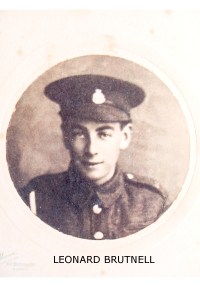

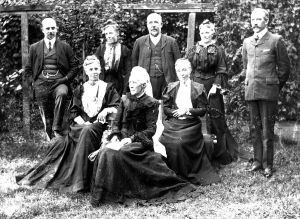
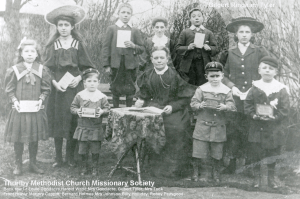


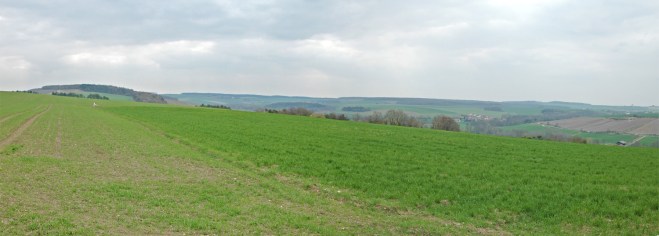
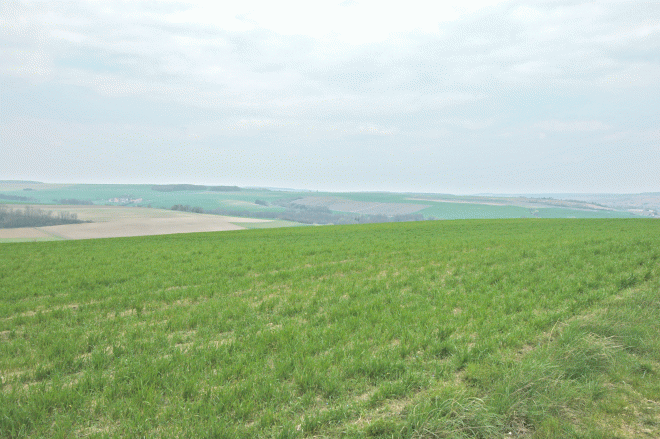
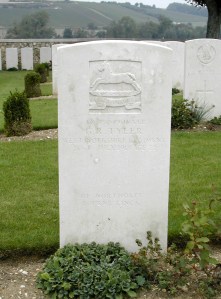
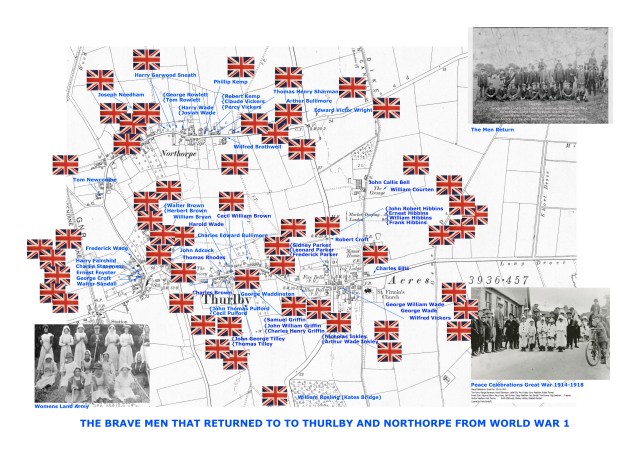

I have found a Ellis Parker who died in the 1st world War, He was born in Grimsby but lived in Thurlby before enlisting, Colin Parker
HI Colin
Nice to hear from you. Any details that you have of Ellis Parker would be gratefully received. It is interesting that we have a Sidney, Leonard and Frederick Parker who came back from the war. Father was Sharman Parker.
Sharman Parker was one of my ancestors, Fredrick lived for some time with his Grandfather Thomas Parker at number 9 Church Lane (or Road. The house is still there.
Sorry have only just read your comments on Ellis Parker, i will also check up on Sydney, Leonard and Fredrick, Colin Parker.
I am researching the story SS Persia in 1915 and the lives lost when she was sunk by U38 in 1915 with a view to publishing in due course. My interest was in Frederick Fairchild and so glad that I found him on your excellent site. What happened to the Blue Bell Inn?
I am pleased you are enjoying the site. The Blue Bell Inn (sometimes known as the Bell Inn was at Thurlby Crossroads. In the photo of the mail coach on the front page of this website it is the building on the left where the coach has stopped. The Inn was pulled down for road widening in circa 1956.
I believe John Joseph Tasker to be Private 30974 of 2nd Battalion Lincolnshire Regiment. Copies of his medal index card and medal and awards roll are on the Ancestry.co.uk website. More importantly, also on Ancestry, is the Army Registers of Soldiers’ Effects which shows that John Joseph died “31 July 1917, on or since, death presumed” and that monies owing, as well as the war gratuity, were paid to his father George.
31 July 1917 was the first day of the Battle of Passchendaele when so many men fell and were never found. It does appear that the Commonwealth War Graves Commission have also missed him as I would have expected him to be remembered on the Ypres (Menin Gate) Memorial.
Thats brilliant, thank you so much for the information.